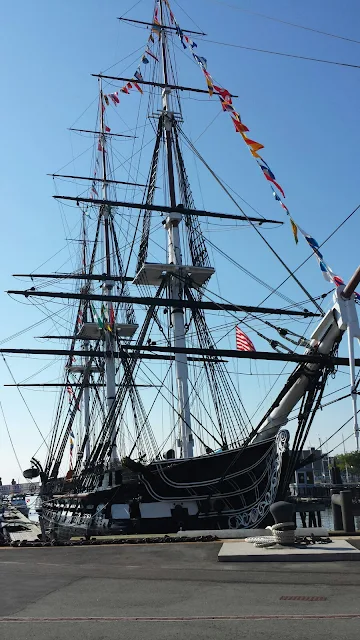During my time with the National Park Service in the 1980's I was stationed at the Charlestown district of Boston National Historical Park. Each day arriving to work and later leaving work I passed by the USS Constitution. Still a commissioned ship of the United States Navy, "Old Ironsides is crewed by serving members of the navy. It is a living history of the traditions of the navy from the War of 1812. a must see for anyone visiting Boston.
Once a year on July 4 the ship is towed out from its pier and brought to the outer harbour and back again. In addition to invited dignitaries and guests a small number of people are chosen by lottery to sail on the Constitution. My wife Janine (who I met while working at the navy yard) and I have always wanted to do this. Well, this year we were picked to sail on the Constitution! We set sail at 10:00 a.m. on July 4th for a four hour cruise.
 |
| Crowds on the main deck |
 |
| Singing sea shanties |
We arrived early at 8:30 am at the Navy Yard. We had to go through security before entering the ship. Similar to going through TSA at the aurport. It was very hot (about 99 degrees) and we brought lunch and plenty of water and Gatorade with us on board. Everyone was excited and happy and in a good mood. Janine and I explored the main deck and gun deck. The ship's crew members entertained us with stories about the ship and also ran children (and some adults) through simulated cannon gun drill. A group who sang sea shanties entertained us with their music throughout the cruise. Once the lines were established the tugs started us off the dock and off we went. The Constitution does not have enough sails to be under her own power so tugs push us along at a leisurely pace. Plenty of smaller boats and tour ships follow along side.
If you were interested you could also get a flag that was flown on the Constitution. You got a certificate signed by the captain. A crew member helped you raise the flag and then lowered it. Another crew member then helped you fold it in a military fashion. Janine and I just had to do it.
A pleasant time and a very memorable experience. One that we will not forget. After all how many people can say they sailed on the USS Constitution!




































